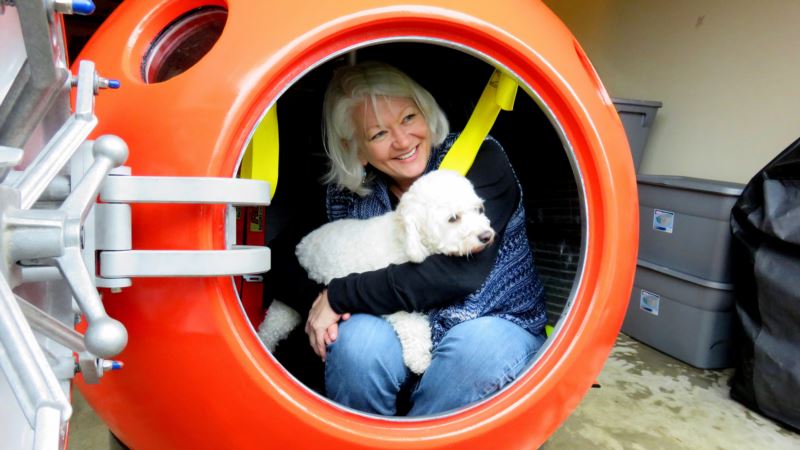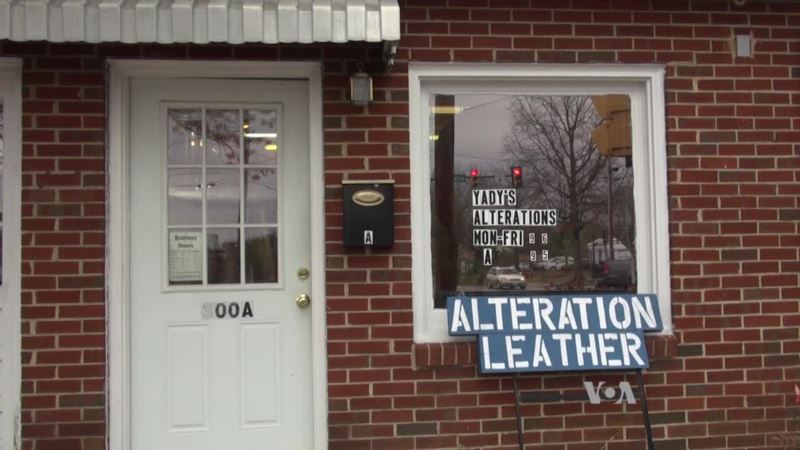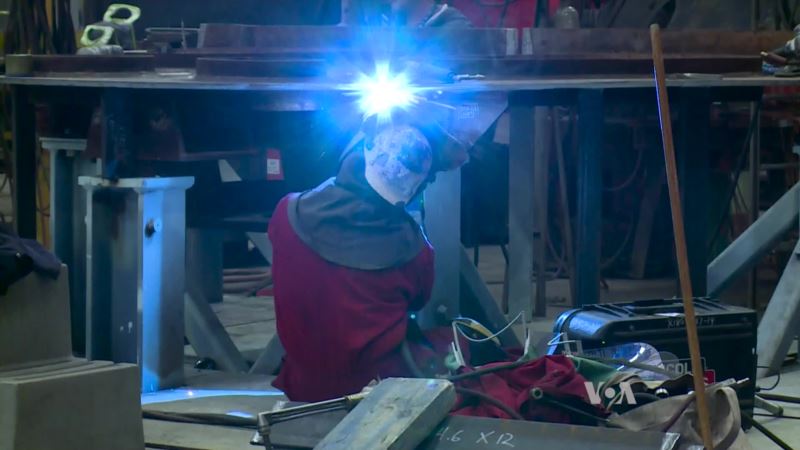A small company in the northwestern U.S. is drawing global interest in a high tech way to survive a tsunami. The company has created an escape pod, called a survival capsule that could also protect residents on vulnerable coastlines in the event of a hurricane or typhoon. In either case, survival involves climbing into a spherical aluminum pod, and buckling in for what is sure to be the ride of your life. Jeanne Johnson is the first U.S. buyer of this technology. She just recently moved from the Seattle area to what she calls her "dream home" at the beach. It's about midway up the sandy, flat Long Beach Peninsula in southwest Washington state, and, she recognized, in a tsunami zone. Geologic records show the Cascadia earthquake fault offshore is capable of and has a history of generating massive tsunamis. In an effort to protect its residents, the city of Long Beach is using grant money to design an armored, man-made hill that could be used as a tsunami evacuation platform for at least 850 people. Evacuation options But Johnson doesn't think that would work for her. While she could make a run for high ground, the Microsoft executive doubts she could reach safety in the short time between the end of the shaking of a great earthquake and incoming tsunami waves. "When I decided to move to the ocean into a tsunami zone I felt like I should prepare. People panic and I don't want to be caught in the panic," she explained. So she did a bit of Internet research and discovered a different option: a bright orange, high-strength floating metal ball that looks like something NASA had designed for astronauts. She has taken delivery and is now deciding whether to tether her capsule in her herb garden or keep it in the garage. The aircraft-grade aluminum sphere is about one and a third meters in diameter. It has a round marine door and two tiny portholes. Inside, air supply tanks and about six to seven days' worth of drinking water come standard. A small portable toilet is an optional feature. "My model is big enough for two people to be buckled in like a pilot's seat," she said, adding that she wants her dog Trixie to join her if and when “the Big One” comes. "I have friends who say, 'Oh my God, wouldn't it be claustrophobic? How can you stand it?' All I can think is, what's my option? To drown? I would rather be in that ball for the ride of my life and maintain my life." A brainstorm for survival That ‘ball’ is the creation of a startup called Survival Capsule, based near Seattle. Company president Julian Sharpe is an aerospace engineer. He got the idea for the product lying awake one night while spending the weekend at a beach town in Oregon. "I thought, 'Well, what happens now if a tsunami comes?'" he recalled. "I just thought it's going to be a disaster because I've got four sleeping kids. If it comes at night, the lights are going to be out. You don't necessarily know where you're going. You can't see the wave, how far it is. So I thought it would be great if I could design something to throw the family in and ride it out. That's where it all started." While the inspiration for the product was tsunami survival, Sharpe said his company's capsules are now drawing additional interest from people worried about hurricanes or typhoons. "Rather than evacuate from hurricanes and be 200 miles away while the hurricane decides it wants to go in a different direction, leaving their home vulnerable – or business vulnerable – to looting, they want to stay at home and have a tsunami capsule as a last line of defense." The cost of peace of mind The two-person survival capsule starts at $13,500. A four-person model lists for $17,500. The company's initial sales have been to Japanese customers – eight capsule kits so far. Sharpe anticipates local governments in Japan could become a major customer base, although the company has two competitors in that market who are offering similar-looking survival pods. Survival Capsule has also held initial talks to license its design for fabrication in Indonesia, which might produce a lower cost for customers in developing nations.
Would You Climb Into This Capsule to Survive a Tsunami?






